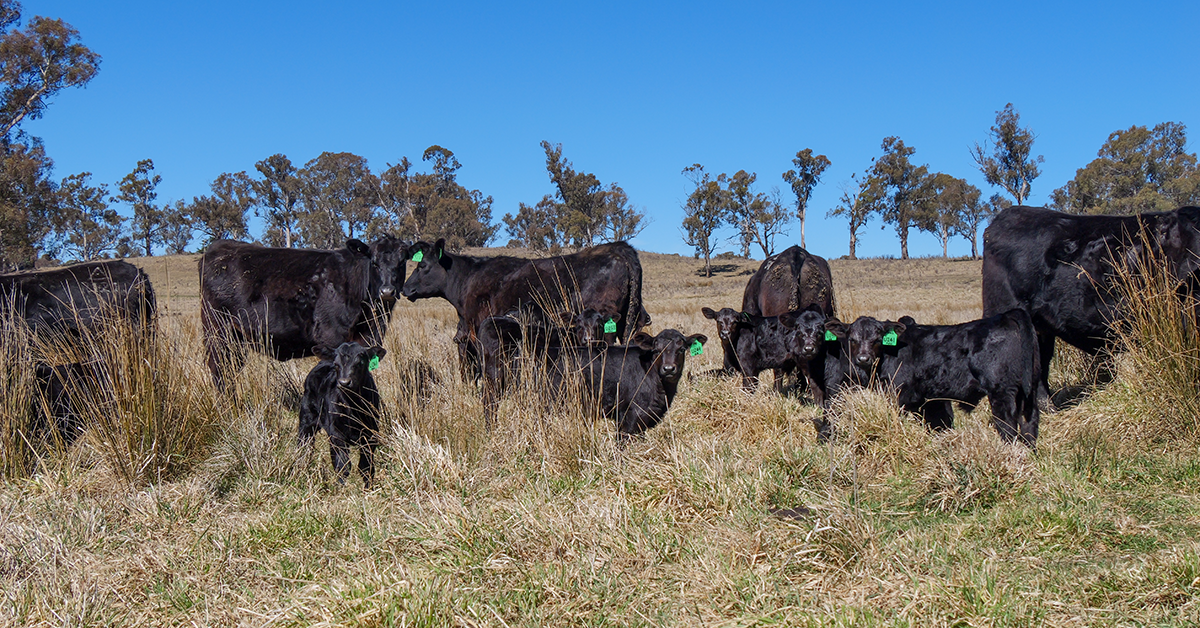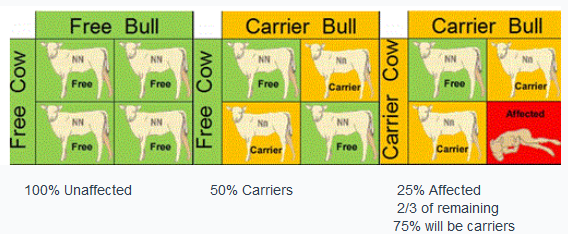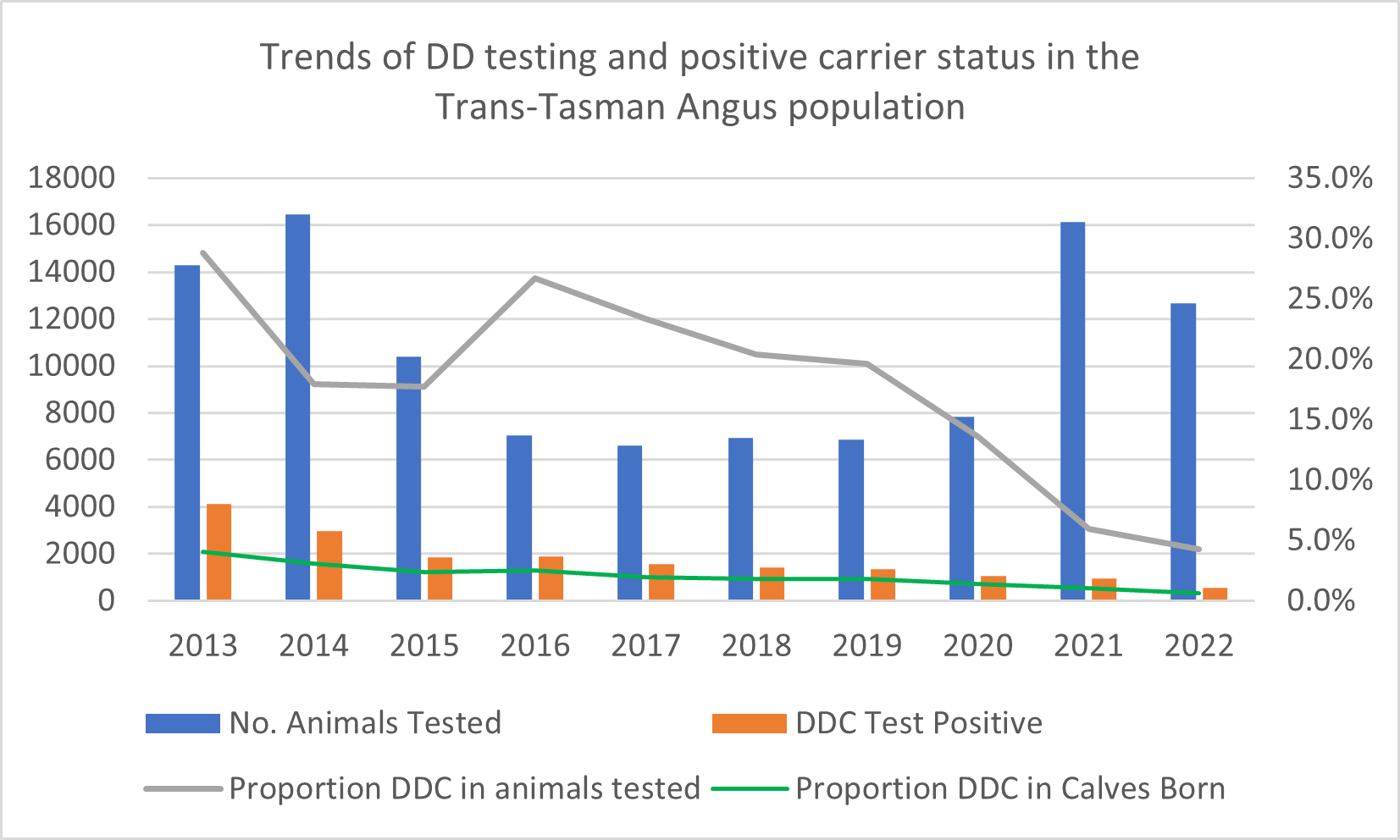Update on the Trends of Angus Genetic Conditions


It’s been ten years since the identification of the Developmental Duplications (DD) recessive genetic condition. Therefore, it is timely to review the current landscape of genetic conditions in the Angus Australia recorded population.
The primary outcome is the frequency of all the main monitored genetic conditions now occur at low levels in the Angus population. This is a result of focused DNA testing, monitoring and selection by Angus breeders, particularly seedstock producers.

What are genetic conditions?
Genetic conditions in cattle are conditions that result from DNA abnormalities. Each of the major genetic conditions that are monitored by Angus Australia has potential economic significance to both commercial and seedstock Angus producers via calf mortality, calving difficulties, and loss of production. Subsequently, these genetic conditions are reported and monitored in the Angus Australia recorded population and published on the angus.tech database.
Re-cap on the genetic conditions
The main monitored genetic conditions are:
Arthrogryposis Multiplex (AM) – Also known as ‘curly calf’. This genetic abnormality results in poor muscle and joint development in utero. The spine and joints are often ‘curled’ or twisted. While the hind limb joints are often rigid and extended. The condition is lethal.
Contractual Arachnodactyly (CA) – also known as ‘fawn calf syndrome’. Calves will typically be born alive with their back legs set behind them and an arched spine. Most of these animals survive to maturity but are often slow growing.
Developmental Duplications (DD) – in its most extreme presentation, DD can result in the formation of additional limbs, skin flaps, duplication of facial features and body wall closure defects.
Neuropathic Hydrocephalus (NH) – A lethal condition where the calf is still born with an enlarged, fluid-filled head that does not contain any recognisable brain or spinal cord tissue.
Several other less common genetic conditions also exist. These are osteoporosis (OS), Dwarfism (DW), Alpha-mannosidosis (MA) and Oculocutaneous hypopigmentation (OH). Further reading on these can be searched on the Angus Australia website.
How are the genetic conditions inherited?
All genetic conditions monitored follow a single recessive gene mode of inheritance. When we consider this mode of inheritance, animals with one recessive gene are called carriers and are not affected by the condition.
If the dam and the sire are both carriers there is a chance the resulting progeny will receive the ‘defective’ gene from both parents, then the progeny will be affected.
Where are we at with Genetic Conditions?
GeneProb software utilizes pedigree information and the DNA test results for genetic conditions to calculate the probability of an untested animal to be a carrier (GeneProb%). Since testing commenced, the carrier frequency of the four major genetic conditions in the Angus Australia recorded population has reduced considerably (see figure 2). Most notably, has been the decline of DD carrier frequency since 2013.
Interestingly, testing for the four major genetic conditions has been at an all-time high in recent years, likely due to bundling of Angus Australia DNA services. Meanwhile, the number of animals testing positive for carrier status for all conditions has continued to decline. This is particularly evident when we look at the proportion of animals who test positive for carrier status in both (i) the population of animals tested, and
(ii) the total number of calves born each year. This is most evident with regards to Developmental Duplications (DD) as seen in the graph below (Figure 3). However, the same trend is present also for AM, CA and NH.

Where to from here?
The Angus Australia community has come a long way in reducing the number of genetic condition carriers in the registered Angus population. Continuing to test animals for carrier status is likely to ensure the prevalence of these conditions continues to fall. Targeting this testing towards animals with a GeneProb% is encouraged.

Lastly, there is always the potential for the discovery of new genetic conditions in the future. If something abnormal is noticed, we encourage members to contact their local cattle Veterinarian.
— Dr Liam A. Mowbray, R&D Specialist